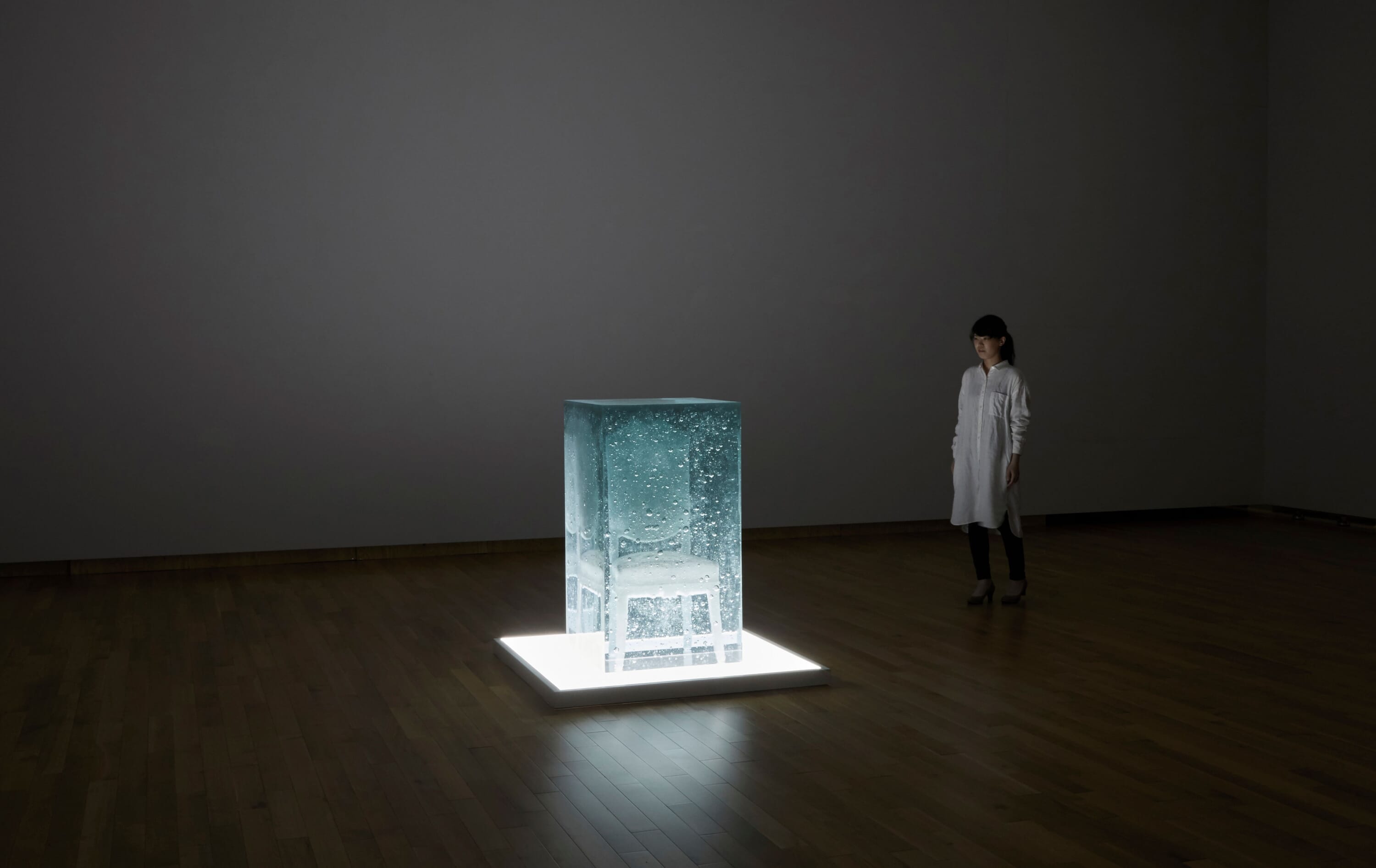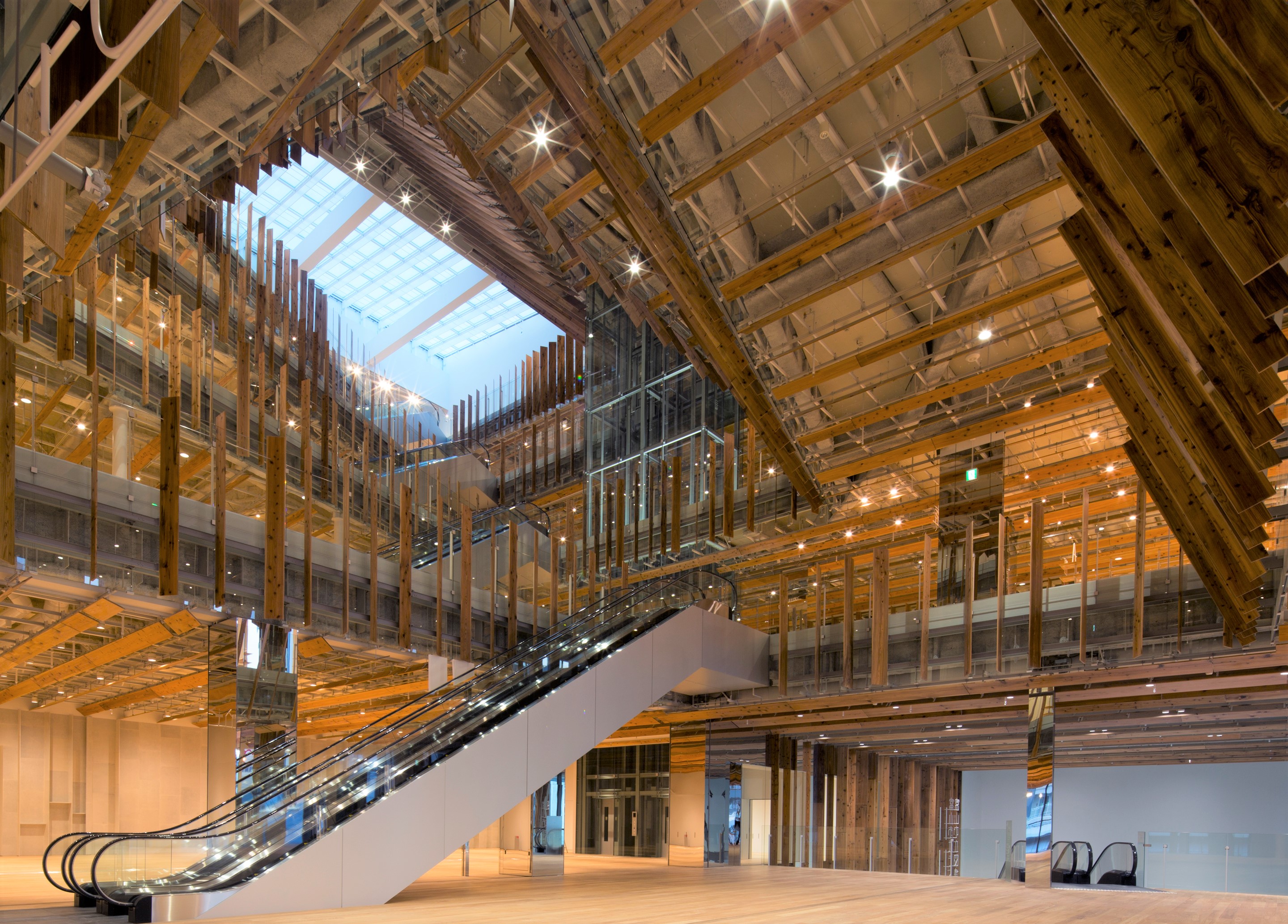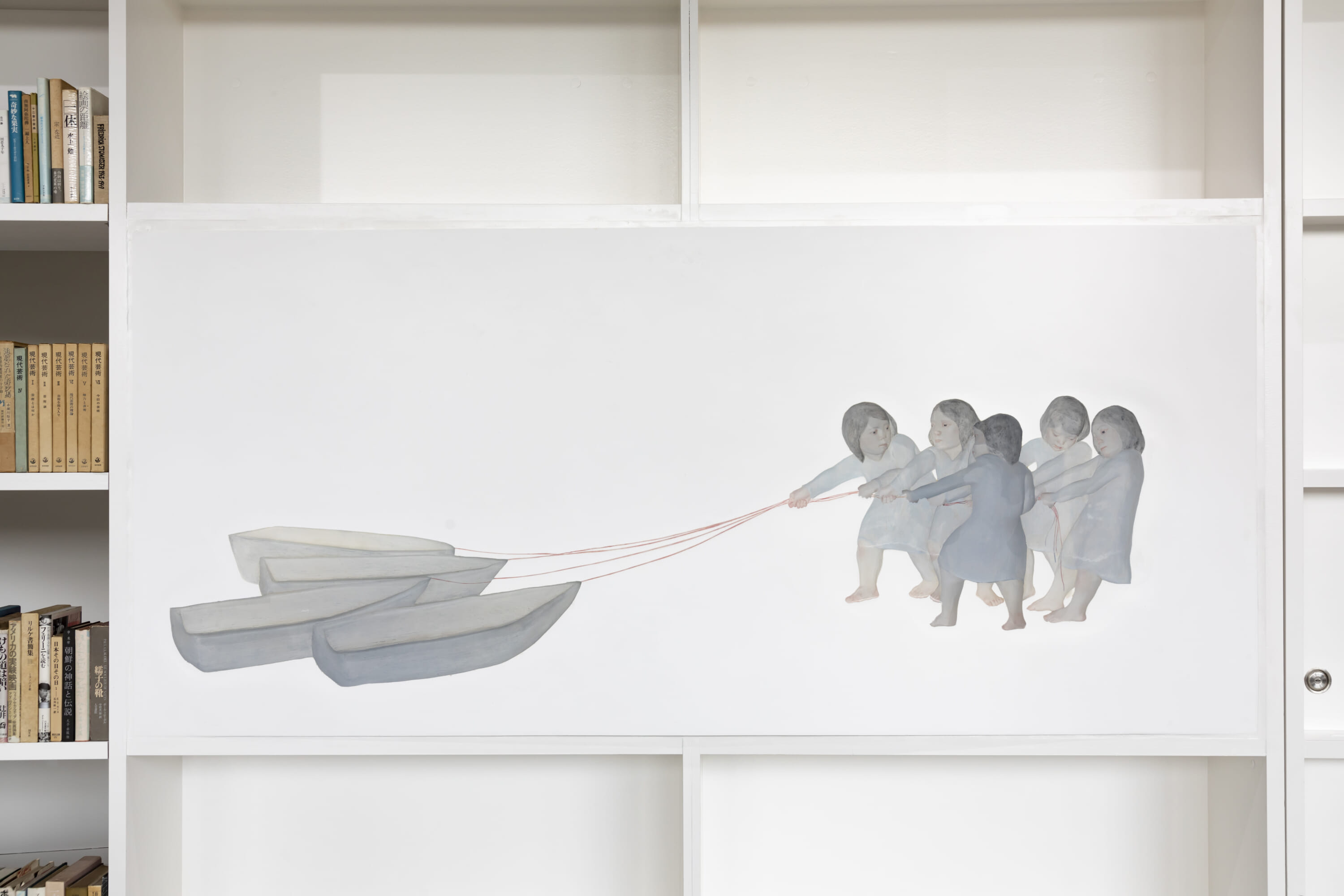Blessed with natural beauty and a geographically diverse landscape extending from the Sea of Japan to the Japan Alps, the Hokuriku region flourished as a center for commerce and creativity. Known for an industrious streak in areas such as agriculture and medicine, it developed a robust economy that has supported artists and artisans for centuries. Crafts including ceramics, lacquer, metalwork, textiles and papermaking gained international renown, fostering a culture of innovation that has shaped the larger world of Japanese design.
Today Hokuriku continues to celebrate its creative spirit, fusing traditional aesthetics and methods of making with contemporary art. Home to popular destinations like the 21st Century Museum of Contemporary Art, Kanazawa and the garden Kenroku-en, the Ishikawa capital shines as the cultural center of the region. Still, there is no shortage of places across Ishikawa, Toyama, Fukui and Niigata worth visiting for their legacies and ongoing contributions to art, craft, architecture and philosophy. The area displays an unmatched talent for exhibiting art in astonishing locations like rice fields, temples and disused buildings. Its many festivals and events make for excellent getaways. Here are a few under-the-radar Hokuriku spots for art and culture sure to inspire and offer fresh vantage points on Japan.
House of Light
James Turrell’s House of Light in the secluded mountain town of Tokamachi, Niigata Prefecture, offers the chance to stay inside a work of art. Turrell, a pioneer of the 1960s light and space movement, is renowned for his installations investigating the “materiality of light” through experiences of space and color. He designed this meditation retreat in the region’s traditional architectural style for the 2000 Echigo-Tsumari Art Triennale.
Influenced by Jun’ichiro Tanizaki’s In Praise of Shadows, a classic text on Japanese aesthetics, House of Light features tatami, a tokonoma alcove, shoji doors and an engawa wooden porch. It also integrates contemporary and Western elements, such as neon fiber-optic lighting in the bath and a retractable skylight for daily sunrise and sunset viewings.
House of Light accommodates up to 16 lodgers nightly. The fee starts at ¥25,000 per party. Individuals can stay at a cost of ¥5,000-6,000, but may be asked to room with others. The kitchen and bath are limited to overnighters. For those unable to stay, the house can be toured for ¥600. The space can also be rented for daytime meetings (reservations required). Please note that the venue is not wheelchair accessible.
Toyama Glass Art Museum
Toyama Glass Art Museum in Toyama city is both a treasure trove and crowning jewel of contemporary glass art. Spanning six floors of the Kengo Kuma-designed Toyama Kirari building, the museum showcases glass artworks and installations from around the world. Its exhibitions demonstrate the full expressive potential of glass, presenting works in all colors of the rainbow taking forms that range from oozing liquids to metallic solids.
The dynamic Toyama Kirari civic center pays architectural homage to the area’s glassmaking tradition. Its facade is inspired by the massive ice walls of the Tateyama mountain range. Inside, soft light pours through an atrium built with locally produced cedar boards, glass and mirrors. Riding the escalator or transparent elevator through the dazzling space is an experience of art in itself.
Permanent exhibitions feature glass art from Toyama city’s collection, while the Glass Art Passage displays work by artists affiliated with the prefecture. The unmissable Glass Art Garden introduces the phantasmic world of glass master Dale Chihuly. Special exhibitions focus on pieces created since the 1950s.
A solo show by the celebrated contemporary artist Aiko Miyanaga, known for her enigmatic mixed-media glass sculptures, runs November 3–January 28, 2024.
MonET
Museum on Echigo-Tsumari (also known as MonET) is a key hub for Echigo-Tsumari Art Field, an ongoing creative project spread across the Niigata Prefecture countryside. The building, designed by the architectural firm Hiroshi Hara+AtelierΦ, was repurposed as a contemporary art museum for the Echigo-Tsumari Art Triennale in 2012. It now holds works by prominent artists such as Kohei Nawa, 目 [mé] and Carsten Nicolai. Luminaries such as Daido Moriyama and Christian Boltanski have also presented work here. An inner courtyard features a reflecting pool by Leandro Erlich, a virtuoso of visual tricks.
This year marks a new endeavor for the museum, with a series of guest-curated exhibitions bringing cutting-edge media artists, printmakers and painters to the site. The grounds also include a museum shop, community salon and hot springs.
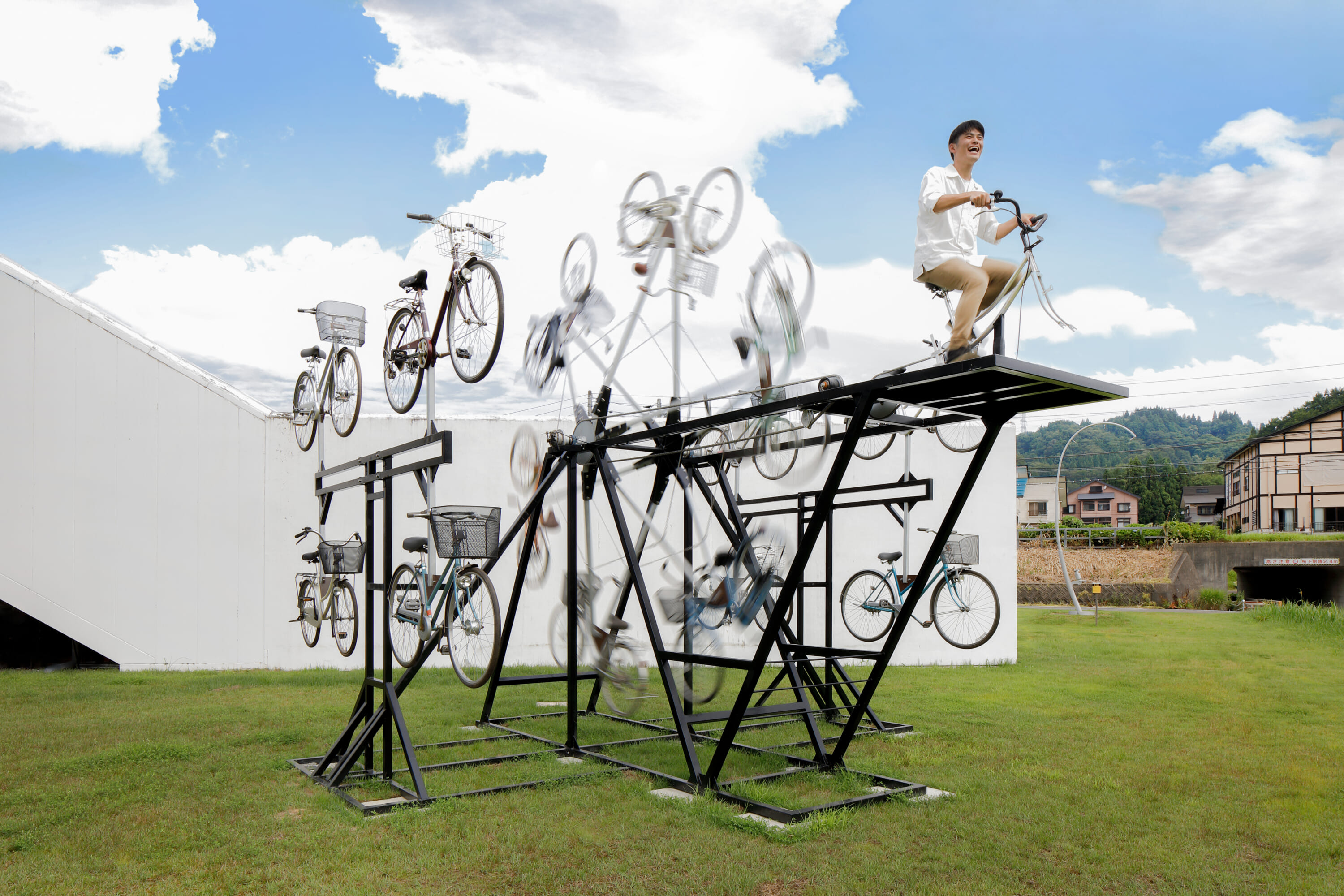
Matsudai Nohbutai Field Museum
Matsudai Nohbutai Field Museum is another EchigoTsumari Art Field attraction in Tokamachi, Niigata. The site encompasses the Matsudai Nohbutai building, open all year (closed Tue & Wed, except holidays), plus 40 artworks dotted around satoyama mountainside rice terraces, which can be toured in spring through early fall.
Matsudai Nohbutai houses works by leading Japanese and international contemporary artists, including exSoviets Ilya & Emilia Kabakov, known for collaborative projects exploring dreams and ideals, and Tatsuo Kawaguchi, who has contributed installations reflecting his experience as an educator. Be sure to grab a bite at the restaurant Echigo-Matsudai Satoyama Shokudo. It offers teatime treats and, on weekends and holidays, serves up dishes made with fresh, locally grown veggies in a “satoyama buffet.” Diners can admire photography installations by the French artist Jean-Luc Vilmouth.
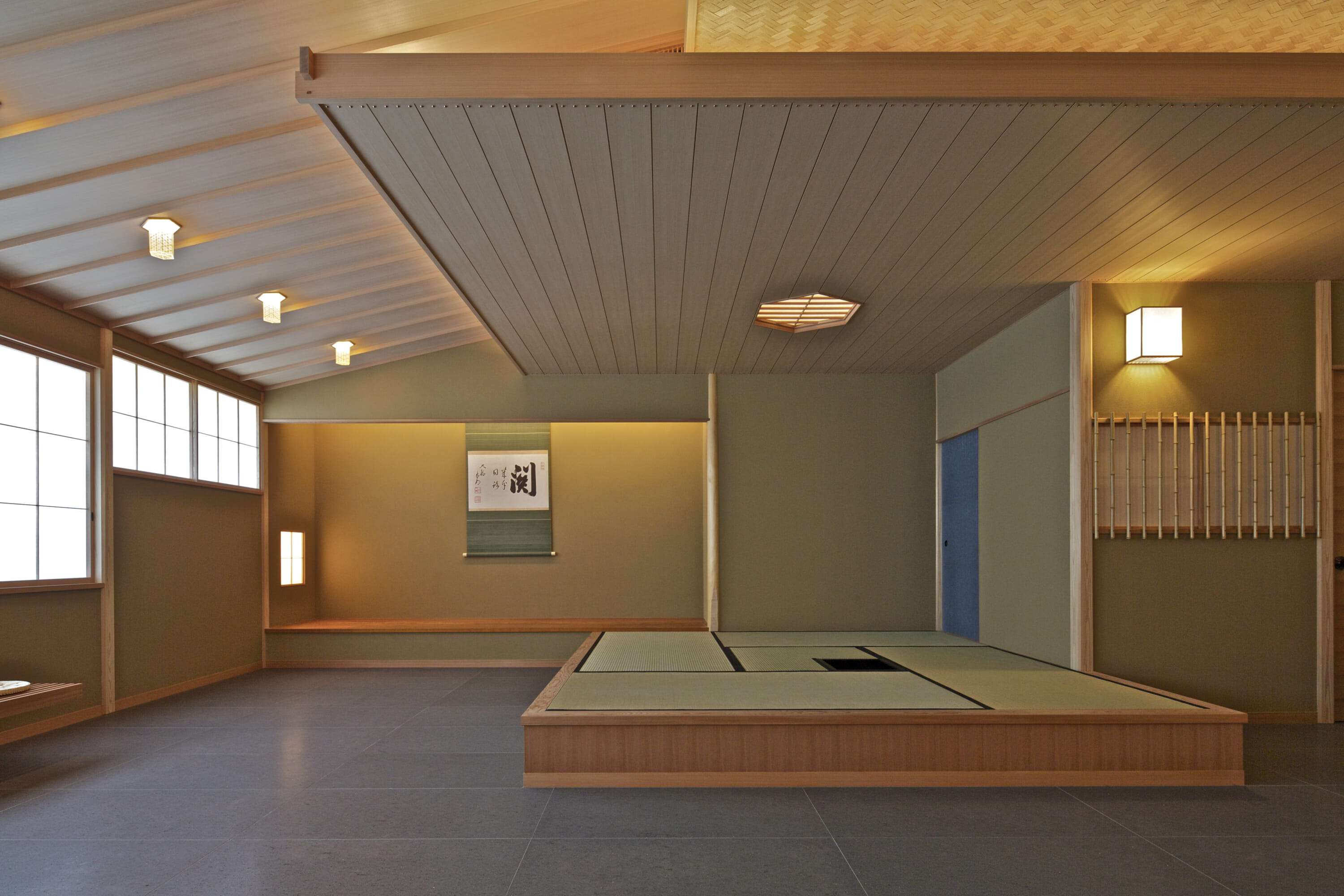
Yoshiro and Yoshio Taniguchi Museum of Architecture, Kanazawa
Yoshiro and Yoshio Taniguchi Museum of Architecture, Kanazawa reflects the styles and celebrates the achievements of Yoshiro and Yoshio Taniguchi, a father and son both designated Persons of Cultural Merit. Yoshiro is known for fusing traditional Japanese design and Western modernism in landmark structures such as the Hotel Okura and National Museum of Modern Art, Tokyo. He also directed the Meiji Mura architecture village in Nagoya. Yoshio’s claims to fame include the 2004 MoMA redesign, as well as prominent Japanese museums such as the Gallery of Horyuji Treasures in Tokyo.
This museum, designed by Yoshio and built on the site of Yoshiro’s former residence, serves as a hub of architectural culture. Its permanent exhibition space reproduces Yoshiro’s blueprint for the main Japanese-style room and tearoom of Akasaka Palace, a State Guesthouse and National Treasure. Special exhibitions on architecture and cities are held twice a year. “Cityscapes in Anime Background Art” presents background scenery from six sci-fi films from around the 1990s, when hand-drawn animation was at its peak in Japan. Other displays include books and location photos used to create the art, video interviews and architectural visions of future cities.
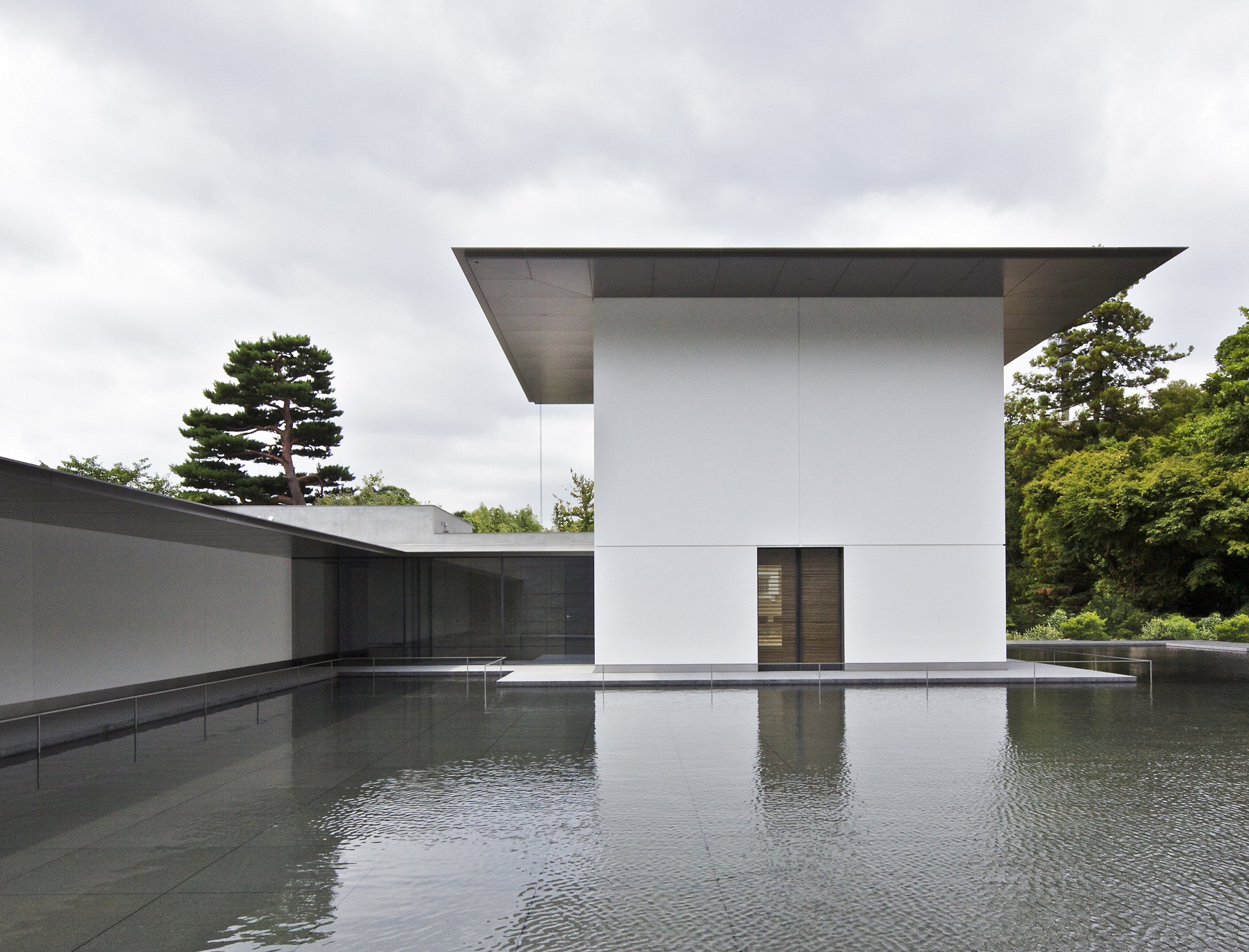
D.T. Suzuki Museum
The D.T. Suzuki Museum opened in 2011 as a tribute to the scholar and Buddhist philosopher Daisetz Teitaro Suzuki (1870 – 1966). This sleekly minimalist facility in Suzuki’s hometown of Kanazawa consists of three wings with gardens, a reading area and a room exhibiting his writings, photographs and calligraphy. The highlight of the stone and steel structure, designed by Yoshio Taniguchi, is a courtyard with a shallow pool and space for reflection modeled on the hojo contemplation huts of priests and recluses.
Several thematic shows expressing Suzuki’s ideas are held each year. In addition to practicing Buddhism and teaching at universities in Japan, the Nobel Peace Prize nominee lived abroad and contributed to the international Zen revival of the 20th century. The current exhibition (ending Nov. 26) spotlights the institution’s relationship with The Japan Folk Crafts Museum in Tokyo. It’s a great chance to visit before the space closes for repairs until March 2024.
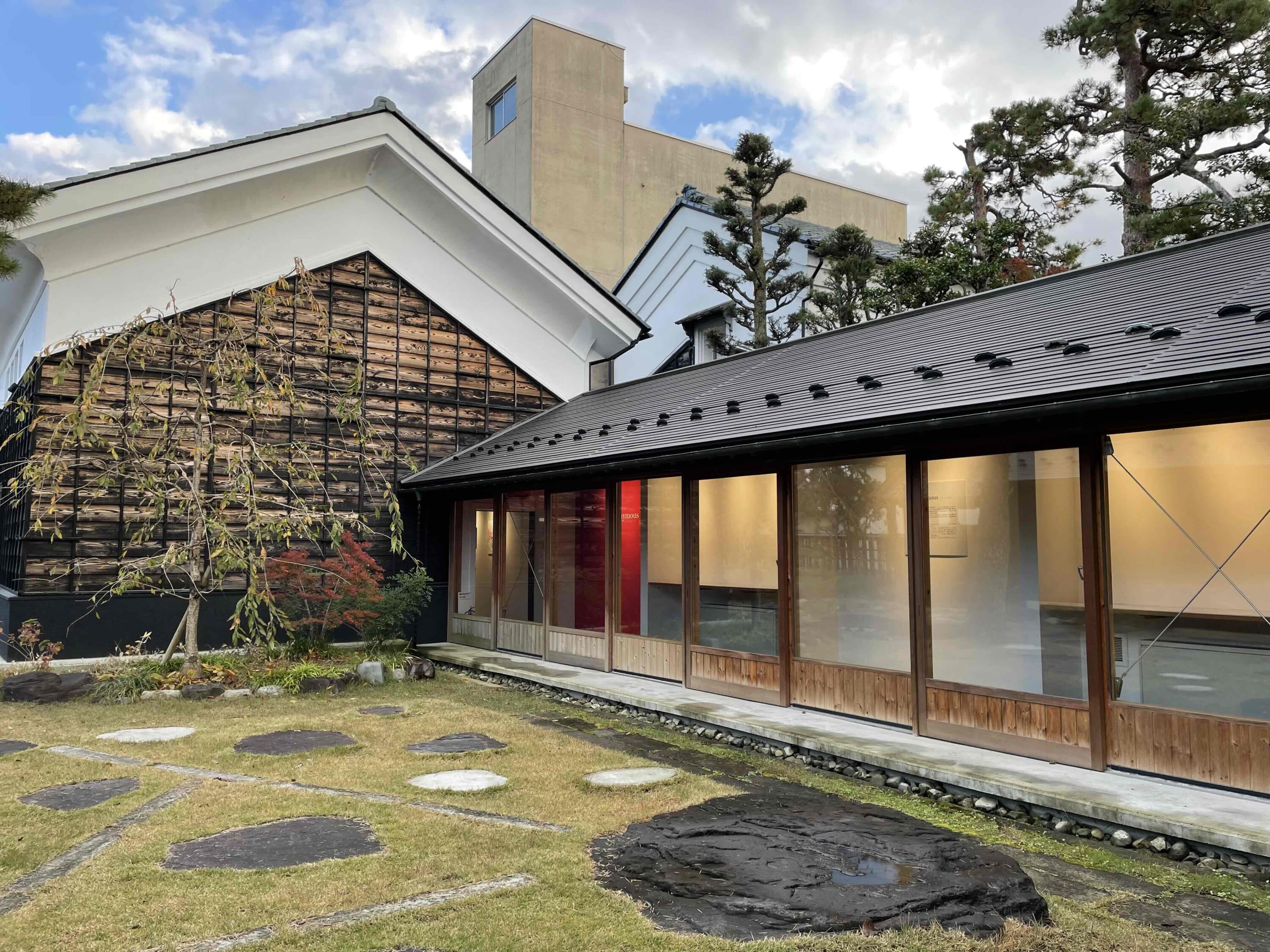
Cocono Art Place
Cocono Art Place is located in Ono, Fukui Prefecture, a castle town called “Little Kyoto in Hokuriku” that also embraces contemporary art. Striving to “boldly take on the new while preserving and utilizing the old,” Ono has a history of collecting contemporary art thanks to its citizens’ enthusiastic participation in the “Little Collectors Movement” started in the 1950s. Fluxus member Ay-O and postwar printmaker Risaburo were among the artists favored by Ono residents and now showcased at Cocono Art Place.
Opened in 2018, this community-centered facility aims to pass down the town’s deeply rooted culture of art appreciation to the next generation with exhibitions and events held in a renovated minka folk house dating back more than 120 years. Retaining traditional architectural elements such as tatami, fusuma and lacquered wooden beams, the Good Design Award-winning building comprises three galleries, an inner terrace, a café and a shop selling handicrafts and work by local artists. The abstract wood sculptor Takashi Iwamoto is featured in an October–December exhibition. General admission is ¥300.
This article was originally published in the special issue En Route.

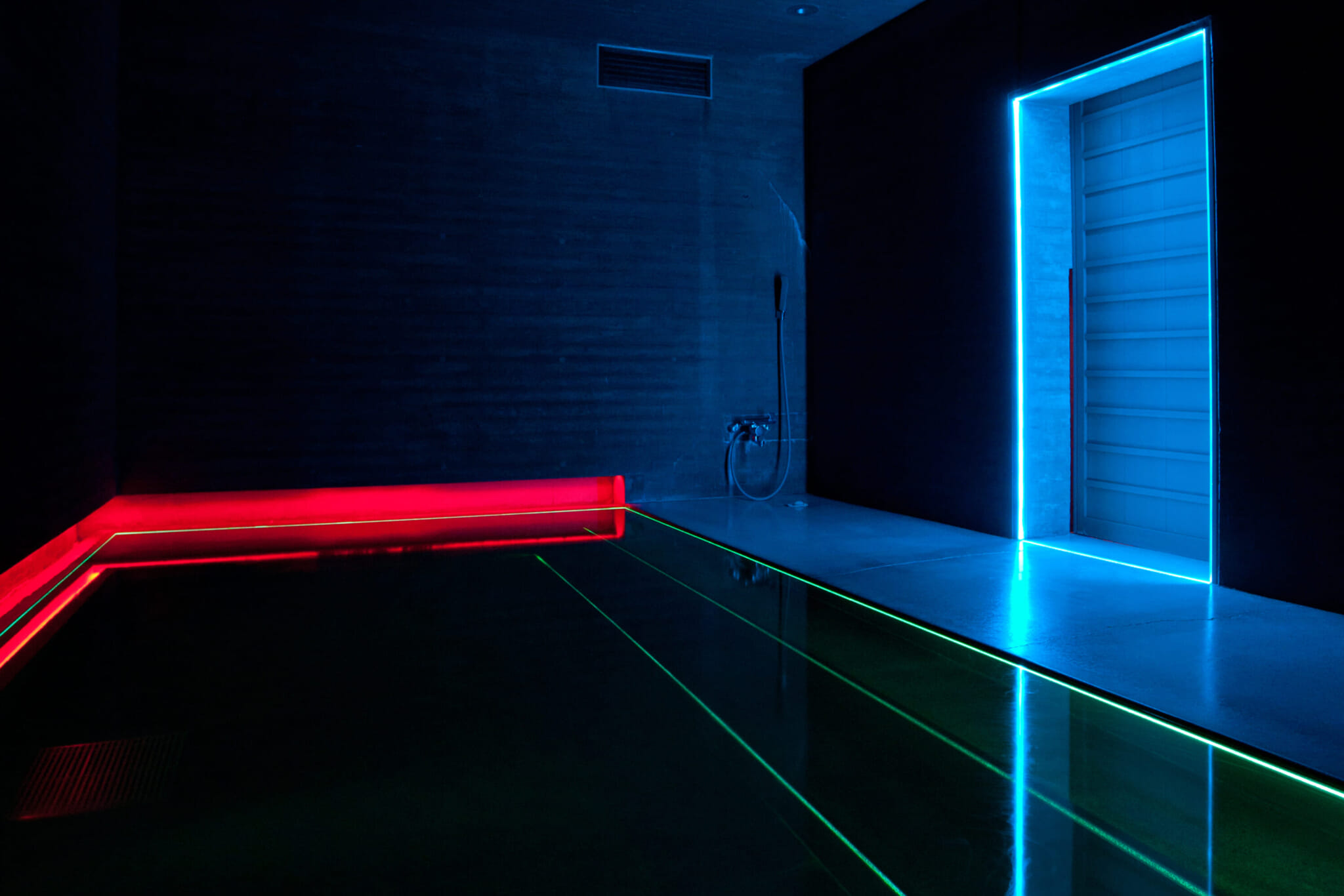

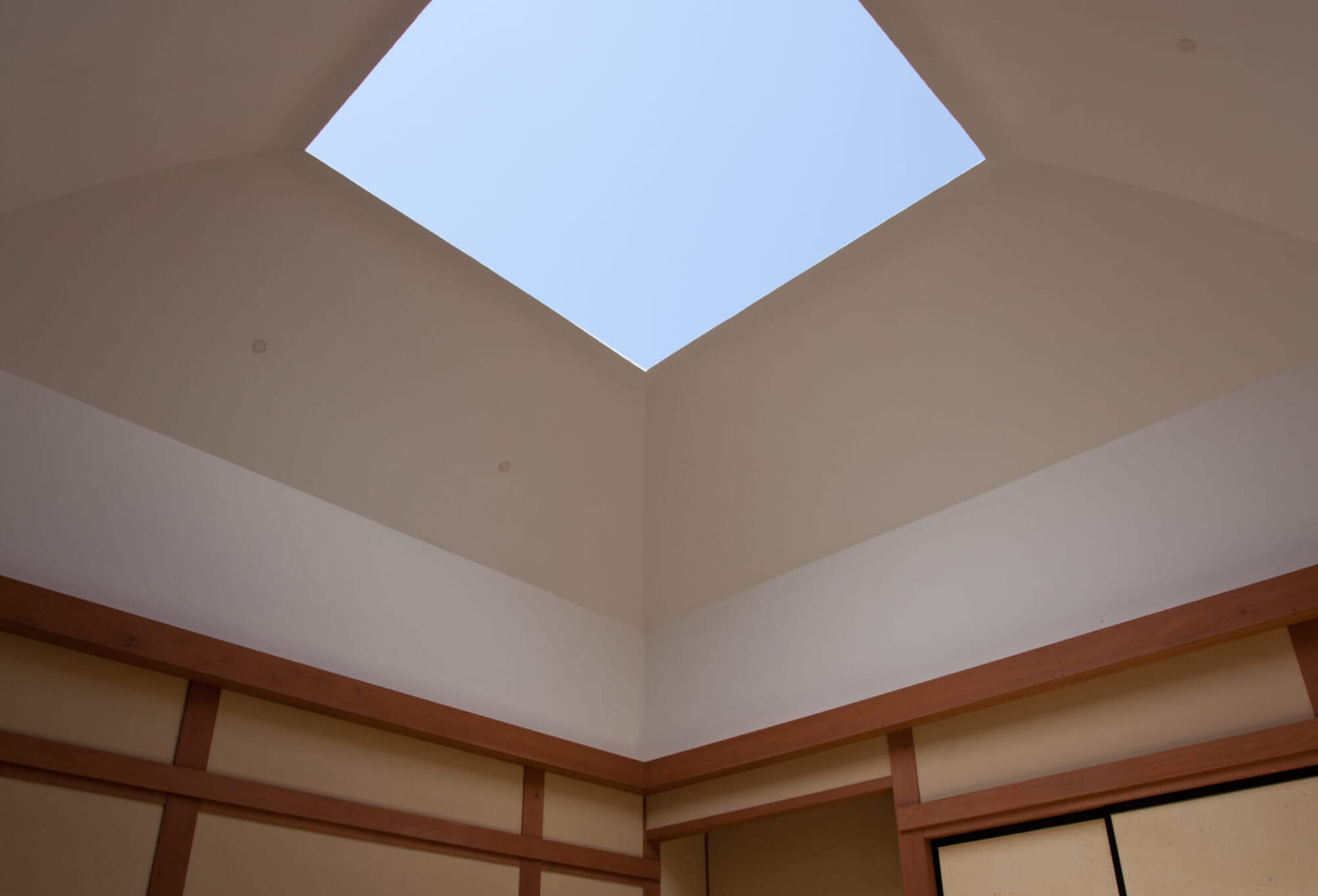
.jpg)
